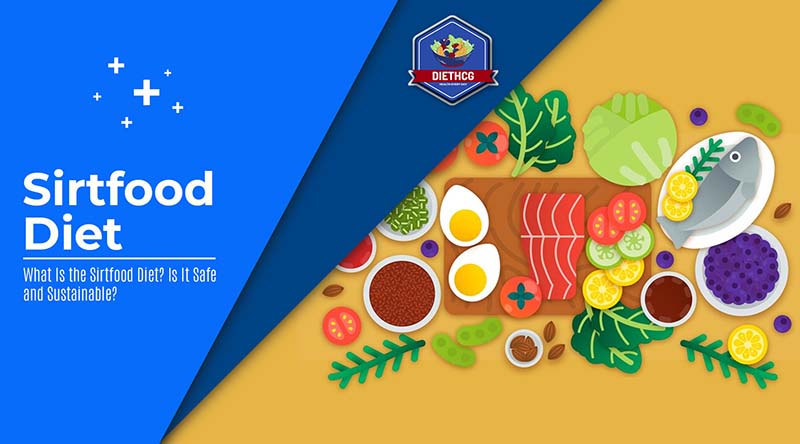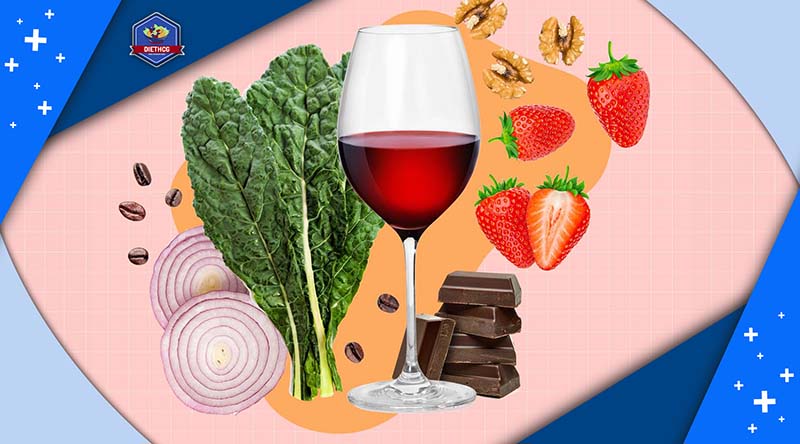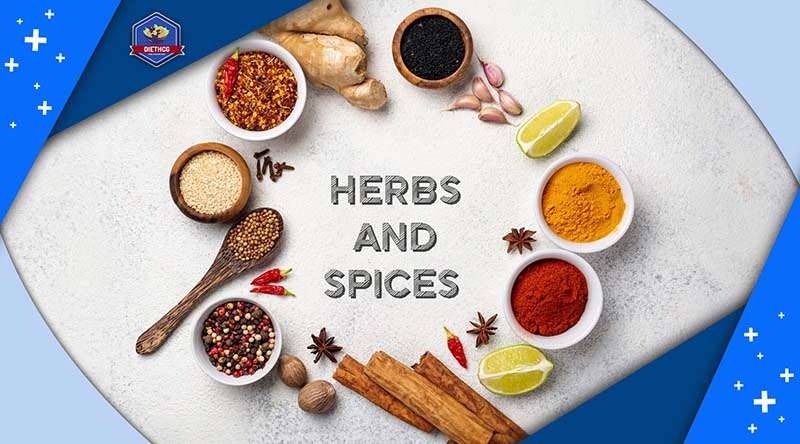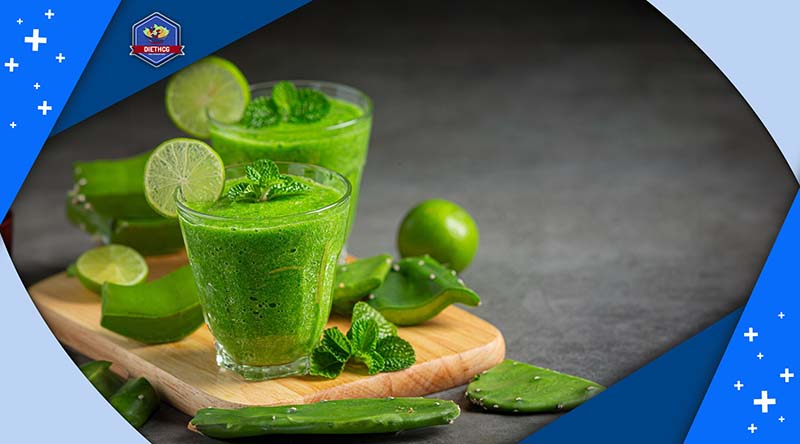The Sirtfood Diet has become quite popular lately, especially among European celebrities, because it lets you have red wine and chocolate. Fans of the diet say it’s not just a passing trend; they believe it works because of the special “sirtfoods” it includes, which supposedly help with losing weight and staying healthy. However, experts warn that it might not be as effective as it claims and could have some downsides. In this article, let’s Diethcg.co.nz review more about the Sirtfood diet and whether it really brings the health benefits that it promises.

1. What Is the Sirtfood Diet?
The Sirtfood Diet, outlined in the book “The Sirtfood Diet” by Aidan Goggins and Glen Matten, revolves around consuming foods abundant in “sirtfoods,” which purportedly activate a group of proteins known as sirtuins (SIRTs). These proteins are believed to aid in fat burning, metabolism enhancement, cell protection, inflammation regulation, energy efficiency increase, and slowing down the aging process.
The diet comprises foods such as kale, celery, green tea, dark chocolate, apples, turmeric, blueberries, and others. While the diet promises weight loss and health benefits, experts advise that its long-term effects and scientific validation are still being investigated.

2. How Does the Sirtfood Diet Work?
It’s believed that sirtuins play a role in the body’s fat-burning process and metabolism, allegedly leading to a weekly weight loss of around 7 pounds (3 kilograms) while preserving muscle mass. However, some experts are skeptical, suggesting that this weight loss may not entirely be from fat but could instead be attributed to alterations in glycogen stores in skeletal muscle and the liver.
3. What Can You Eat on the Sirtfood Diet?
Famous for its allowance of red wine and dark chocolate, the Sirtfood Diet primarily emphasizes a variety of fruits, grains, leafy greens, herbs, spices, oils, and beverages rich in sirtuin activators. While meat is optional, the diet can be adapted for vegans and vegetarians, with a recommendation to consume meat in moderation.
3.1 Fruits and Vegetables
The Sirtfood Diet encourages consumption of antioxidant-rich fruits and vegetables such as:
- Kale
- Strawberries
- Onions
- Arugula
- Capers
- Blueberries
- Medjool dates
- Red chicory
3.2 Herbs and Spices
Herbs and spices are favored on the Sirtfood Diet, either in green juices or as flavor enhancers for meals. Recommended options include:
- Turmeric
- Parsley
- Lovage
- Basil
- Cilantro

3.3 Beverages
During the Sirtfood Diet, at least one green drink (juice or shake) is consumed daily, with a gradual shift from multiple drinks to more meals over time. Beverages allowed on the diet include:
- Green drink
- Red wine
- Coffee
- Tea
3.4 Soy, Legumes, and Meat
Soy and legumes are sources of sirtuins, whereas meat should be eaten sparingly due to its calorie density and lower sirtuin content. Recommended options include:
- Soy
- Legumes
- Meat (in moderation)
- Tofu
- Beans
3.5 Grains
Grains such as buckwheat, known for their high sirtuin content, are included in the diet along with:
- Bread
- Pasta
3.6 Healthy Fats
Incorporating healthy fats is essential on the Sirtfood Diet, with options like:
- Nuts
- Olive oil
- Butter
- Walnuts
- Fatty fish
4. Which Foods Should Be Limited on the Sirtfood Diet?
The Sirtfood Diet emphasizes the consumption of specific foods rather than imposing strict limitations. However, it does advise against the intake of processed foods and added sugars, which commonly accompany each other.
Processed Foods and Added Sugars:
- Refined flours (white flour)
- Added sugars (found in baked goods, candy, soda)
- Processed foods (like chips, crackers, canned soups)
5. Guidelines on How to Follow the Sirtfood Diet
The Sirtfood Diet consists of two phases, spanning a total of three weeks. Following this period, individuals may choose to repeat the program immediately or integrate sirtfoods into their diet without calorie restrictions.
Phase One
Phase one lasts for 7 days and involves calorie restriction alongside an emphasis on consuming green juice. Its purpose is to kickstart weight loss, purportedly facilitating a loss of 7 pounds (3.2 kilograms) within the first week.
- Days 1-3: Caloric intake is limited to 1,000 calories daily. Three green juices are consumed alongside one meal per day, chosen from recipes in the book, all featuring sirtfoods prominently.
- Days 4-7: Caloric intake is increased to 1,500 calories daily. This includes two green juices and two additional meals rich in sirtfoods, selected from the provided recipes.

Phase Two
Phase two extends over 2 weeks and is labeled as the “maintenance” phase, aiming for consistent weight loss. There’s no specified calorie limit for phase two. Instead, individuals consume three meals consisting of sirtfoods and one green juice daily. Once more, meal choices are drawn from recipes provided in the book.
6. Is It Safe and Sustainable?
While sirtfoods generally offer health benefits due to their antioxidant and anti-inflammatory properties, relying solely on a handful of nutritious foods may not meet all of your body’s nutritional requirements.
The Sirtfood Diet is deemed unnecessarily restrictive without clear, distinctive health advantages compared to other dietary approaches.
Moreover, consuming only 1,000 calories per day, as suggested in the diet’s initial phase, is generally discouraged without medical supervision. Even the increased intake of 1,500 calories daily may be overly restrictive for many individuals.
Additionally, the requirement to consume up to three green juices daily poses concerns. While juices provide vitamins and minerals, they also contain sugar and lack the fiber found in whole fruits and vegetables. Continuous juice consumption throughout the day can negatively impact blood sugar levels and dental health.
Furthermore, due to its calorie and food limitations, the diet may lack essential protein, vitamins, and minerals, particularly during the initial phase.
Considering the initial expenses associated with purchasing a juicer, the required book, and certain pricey ingredients, along with the time investment needed for meal and juice preparation, the Sirtfood Diet may be impractical and unsustainable for many individuals.
7. Conclusion
Starting a new diet often offers hope of reaching your goals, but no diet can deliver immediate results. A balanced lifestyle, however, promotes long-term health. The Sirtfood Diet, akin to other quick-fix diets, promises swift weight loss due to its low-calorie plan, rather than being a miraculous solution.
Following a diet, whether short or long term, may not be necessary or effective for everyone. We aim to provide facts rather than endorsing fleeting diet trends, helping you make choices suited to your nutritional needs and lifestyle.
Achieving weight loss is distinct from attaining optimal health, which also involves exercise, sufficient sleep, and other lifestyle elements. Ultimately, the most effective diet is one that is well-rounded and aligns with your life. And do not forget to follow DietHCG for more information or useful to help your weight loss process!


